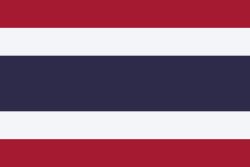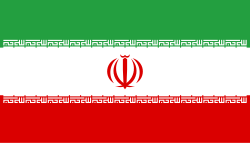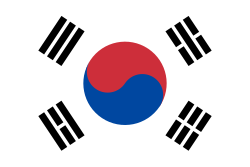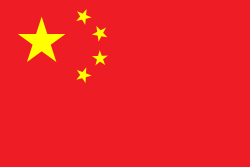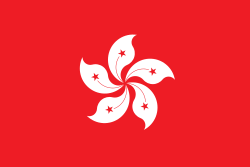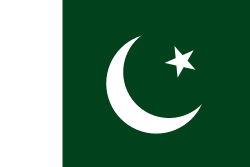Asienspiele (Badminton)
Im Rahmen der Asienspiele, 1951 erstmals ausgetragen, finden seit 1962 auch Titelkämpfe im Badminton statt. 1958 stand Badminton bereits als Demonstrationssport im Programm der Spiele. Zuerst wurden nur im Herrendoppel, Herreneinzel, Damendoppel und Dameneinzel die Sieger ermittelt. Später kamen das Mixed und die Mannschaftskämpfe getrennt nach Frauen und Männern dazu. 1974 waren die Spiele im Badminton von besonderer Brisanz, trafen doch erstmals die Verbände Indonesiens und Chinas aufeinander, die jahrelang getrennte Wege gingen. Badminton bei den Asienspielen ist nicht zu verwechseln mit der Asienmeisterschaft im Badminton.
Austragungsorte
| Jahr | Ausgabe | Gastgeberstadt | Datum |
|---|---|---|---|
| 1951 | I | Neu-Delhi, | 4. bis 11. März 1951, ohne Badminton |
| 1954 | II | Manila, | 1. bis 9. Mai 1954, ohne Badminton |
| 1958 | III | Tokio, | 24. Mai bis 1. Juni 1958, Badminton als Demonstrationssport |
| 1962 | IV | Jakarta, | 24. August bis 4. September 1962 |
| 1966 | V | Bangkok, | 9. bis 22. Dezember 1966 |
| 1970 | VI | Bangkok, | 9. bis 20. Dezember 1970 |
| 1974 | VII | Teheran, | 1. bis 16. September 1974 |
| 1978 | VIII | Bangkok, | 9. bis 20. Dezember 1978 |
| 1982 | IX | Neu-Delhi, | 19. November bis 4. Dezember 1982 |
| 1986 | X | Seoul, | 20. September bis 5. Oktober 1986 |
| 1990 | XI | Peking, | 21. September bis 7. Oktober 1990 |
| 1994 | XII | Hiroshima, | 2. bis 16. Oktober 1994 |
| 1998 | XIII | Bangkok, | 6. bis 20. Dezember 1998 |
| 2002 | XIV | Busan, | 29. September bis 14. Oktober 2002 |
| 2006 | XV | Doha, | 1. bis 15. Dezember 2006 |
| 2010 | XVI | Guangzhou, | 12. bis 27. November 2010 |
| 2014 | XVII | Incheon, | 19. September bis 4. Oktober 2014 |
| 2018 | XVIII | Jakarta, | 19. bis 28. August 2018 |
| 2022 | IXX | Hangzhou, | 28. September bis 7. Oktober 2023 |
Die Sieger
Mannschaftswettbewerb
Medaillenspiegel
- Stand 2023
| Rang | Land | Gold | Silber | Bronze | Gesamt |
|---|---|---|---|---|---|
| 1 | 47 | 32 | 37 | 116 | |
| 2 | 28 | 27 | 44 | 99 | |
| 3 | 18 | 19 | 36 | 73 | |
| 4 | 7 | 9 | 30 | 46 | |
| 5 | 7 | 8 | 21 | 36 | |
| 6 | 1 | 11 | 16 | 28 | |
| 7 | 1 | 2 | 10 | 13 | |
| 8 | 1 | 2 | 5 | 8 | |
| 9 | 1 | 1 | 7 | 9 | |
| 10 | 0 | 0 | 1 | 1 | |
| 0 | 0 | 1 | 1 | ||
| 0 | 0 | 1 | 1 | ||
| Gesamt | 111 | 111 | 209 | 431 | |
Einzelnachweise
- ↑ The Straits Times, 3. September 1962
- ↑ The Straits Times, 21. Dezember 1966
- ↑ The Straits Times, 14. September 1974
- ↑ The Straits Times, 16. September 1974
- ↑ The Straits Times, 7. September 1974
- ↑ The Straits Times, 11. September 1974
Auf dieser Seite verwendete Medien
bendera Indonesia
Flagge des Irans. Die dreifarbige Flagge wurde 1906 eingeführt, aber nach der Islamischen Revolution von 1979 wurden die Arabische Wörter 'Allahu akbar' ('Gott ist groß'), in der Kufischen Schrift vom Koran geschrieben und 22-mal wiederholt, in den roten und grünen Streifen eingefügt, so daß sie an den zentralen weißen Streifen grenzen.
Chinese Taipei Olympic Flag. According to the official website of Chinese Taipei Olympic Committee, Blue Sky(circle) & White Sun(triangles) above the Olympic rings is neither the National Emblem of the Republic of China, nor the Party Emblem of Kuomintang (KMT), but a design in between, where the triangles do not extend to the edge of the blue circle, as registered at International Olympic Committee in 1981 and digitally rendered in 2013. Besides, the blue outline of the five-petaled plum blossom is broader than the red one. Moreover, the CMYK code of the blue one and the Blue Sky & White Sun is "C100-M100-Y0-K0", and different from the Olympic rings (C100-M25-Y0-K0). Note that it's the only version recognized by IOC.
Chinese Taipei Olympic Flag. According to the official website of Chinese Taipei Olympic Committee, Blue Sky(circle) & White Sun(triangles) above the Olympic rings is neither the National Emblem of the Republic of China, nor the Party Emblem of Kuomintang (KMT), but a design in between, where the triangles do not extend to the edge of the blue circle, as registered at International Olympic Committee in 1981 and digitally rendered in 2013. Besides, the blue outline of the five-petaled plum blossom is broader than the red one. Moreover, the CMYK code of the blue one and the Blue Sky & White Sun is "C100-M100-Y0-K0", and different from the Olympic rings (C100-M25-Y0-K0). Note that it's the only version recognized by IOC.
Logo of Olympic Council of Asia





